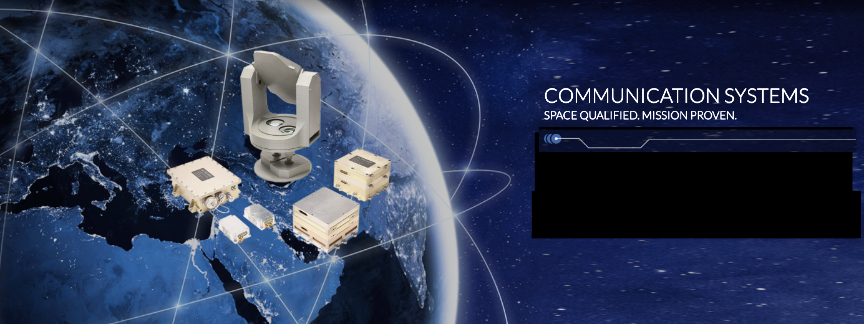
Archives for November 2021
New, Sustainable Space Firm Outpost Launches To Design + Manufacture Reusable Satellites
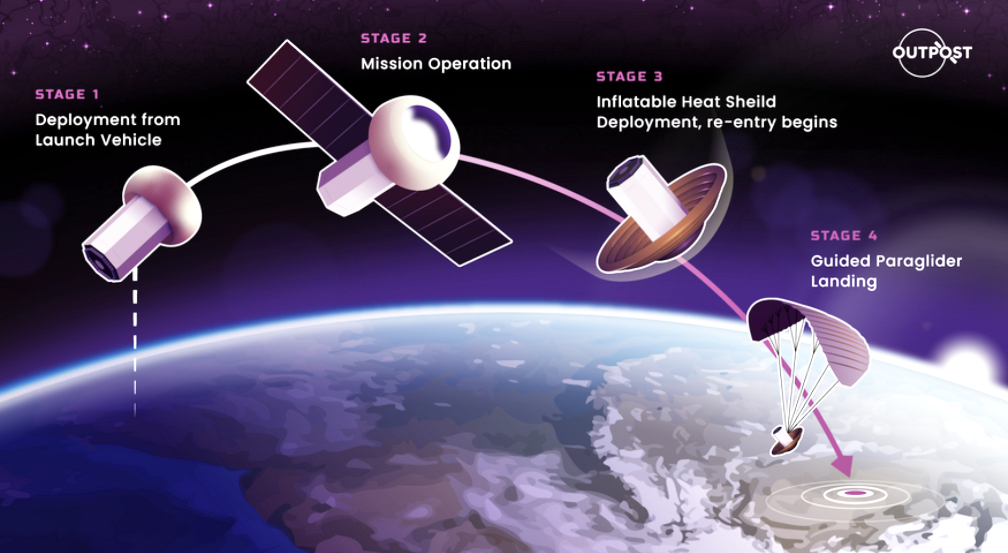
Outpost has launched as a sustainable space firm that is working to redefine what it means to be a space company with sustainability at its core. The company is starting by first solving one of the biggest problems — creating reusable satellites and enabling precision Earth Return of orbital payloads — and designing and manufacturing reusable satellites.
Today, much of the work in space is inefficient, wasteful and expensive. Outpost is radically reducing the cost and time of working in space, which unlocks an iterative, sustainable space economy for the future.
The company believes the future of space (and Earth) requires a focus on sustainability and it’s important that this industry develop from the start with sustainability at its core. All space companies must ultimately become sustainable space companies.
Outpost’s future in space must be built with sustainability at its core — efficient, precise Earth Return is essential for the development of new industries in space and the improvement of life on Earth. Outpost allows companies to iterate on technical developments in space and ensure mission success.
The company’s platform is able to deliver payloads to space and Outpost has two-stage re-entry to bring satellites home. The platform is a 200 kg. spacecraft and, to the best of the company’s knowledge, no spacecraft of that small size has attained orbit and then returned home. Importantly, this also allows for more precise deployment of satellites rather than them having to be dropped off at the same port.
Outpost can provide local delivery to where satellites need to be the platform enables local delivery of orbital payloads and their return to Earth with pinpoint landing accuracy. The immediate opportunity for Outpost is helping rethink how satellites are deployed and used, and re-usable satellites will unlock many new opportunities for research and sustainability. Even being able to return damaged satellites so they can be repaired and reflown will be a major advancement in the industry.
Outpost was founded in 2021 by Jason Dunn, Michael Vergalla, and Aaron Kemmer. Jason and Aaron were both previously founders of Made In Space, which was acquired in 2020 by Redwire. Michael (CTO) is an engineer, environmentalist, and adventurer. He has previously held positions at Moon Express, SpinLaunch and Airbus A3. He is also the founder of Free Flight Research Lab (FFRL) is a Non-Profit Research Institute developed to create positive global impact through applications of technology for advancing weather science & forecasting; conservation & resource preservation; and aerospace science, human factors and free flight safety.
Rocket Lab’s Exclusive License From Johns Hopkins University Applied Physics Laboratory To Manufacture Space Radio Technology
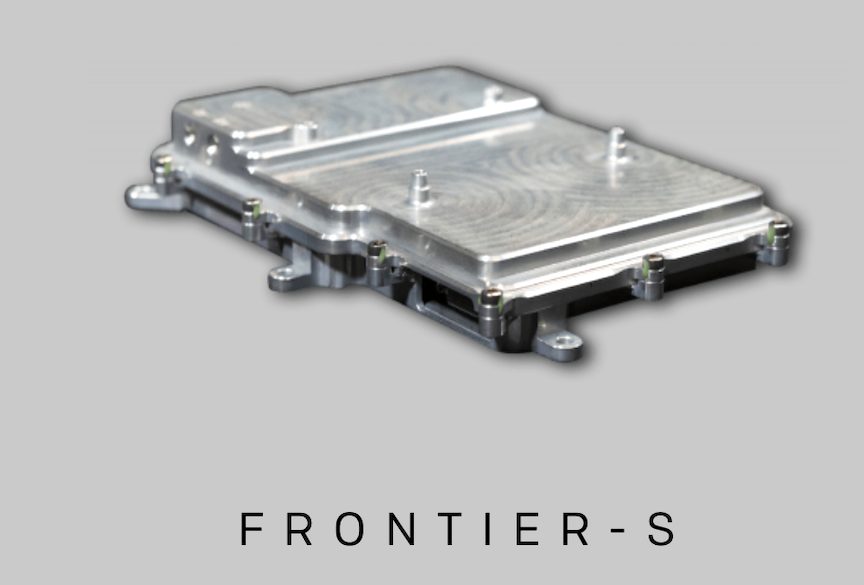
Rocket Lab USA, Inc. (Nasdaq: RKLB) (“Rocket Lab” or “the Company”), provider of launch services and space systems, announced it has entered into an exclusive license agreement with the Johns Hopkins University Applied Physics Laboratory (APL) to commercialize near and deep space capable small spacecraft telemetry and control radio technology. The Frontier-S by Rocket Lab software defined radio (SDR) enables affordable communications and radio navigation for planetary and other missions beyond low Earth orbit (LEO), as well as communications and radio navigation for missions in GPS-denied environments.
The Frontier-S by Rocket Lab, based on the APL Frontier Radio that flew on missions like the Van Allen Probes, Parker Solar Probe, and the Emirates Mars Mission, packs Deep Space Network and other common waveforms into a single board package with up-screened commercial components and low power digital signal processing for high reliability applications. Frontier-S by Rocket Lab includes extended functionality not typically available in a low-cost radio including a coherent transponder to enable radiometric navigation methods, timekeeping functions, and a hardware-based critical command decoder. Compatible with spacecraft as small as 6U cubsesats, the Frontier-S by Rocket Lab SDR offers a lightweight, low power, high radiation tolerant telemetry and command solution for deep space missions that is also affordable for missions in LEO demanding high reliability.
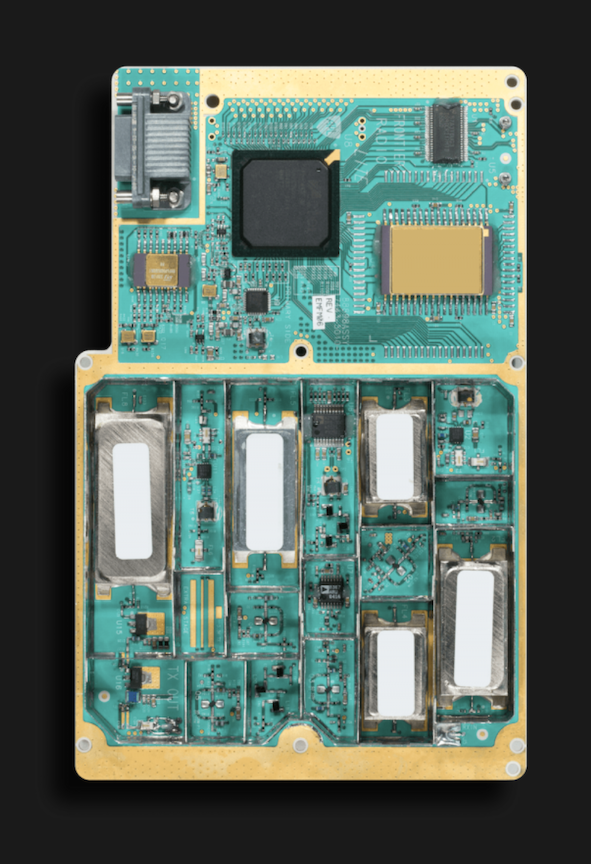
The APL-designed and Rocket Lab-manufactured Frontier-S SDRs are flying today on Pathstone, Rocket Lab’s second Photon mission, are currently being integrated into Rocket Lab’s upcoming CAPSTONE mission to the moon for NASA and are planned for Rocket Lab’s own private Photon mission to Venus. The Frontier-S by Rocket Lab is also the baseline telemetry and control radio for all Photon missions requiring an S-band radio. Rocket Lab is offering the Frontier-S SDR commercially as an off-the-shelf radio solution to other satellite integrators, joining a growing list of spacecraft component offerings like reaction wheels and star trackers.
“Frontier-S radios are another strategic addition to Rocket Lab’s growing space systems portfolio of in-house built products and capabilities, further strengthening our position as an end-to-end space company,” said Peter Beck, Rocket Lab Founder and CEO. “Enabling long-distance communication and telemetry in deep space is difficult for any mission, but especially for small satellites where mass and power constraints are a challenge. Frontier-S radios provide a compelling communications solution for interplanetary missions, as well as those closer to home in low Earth orbit. APL has a long history of making critical contributions to NASA and international missions to meet the challenges of space, applying science, engineering, and technology to develop leading spacecraft, instruments, and subsystems. We are excited to combine APL’s strong history of innovation with Rocket Lab’s proven ability for high-volume manufacturing to deliver an industry-leading communications solution at competitive costs and on reduced timelines.”
Maritime Launch Services First Payload Services Provider Is Nanoracks — Spaceport Nova Scotia Is ‘Unveiled’

Maritime Launch Services, the owner of Canada’s first commercial spaceport, has announced that Nanoracks, a Voyager Space company and a leading, commercial, payload provider to the International Space Station (ISS), will serve as the company’s first client when Spaceport Nova Scotia’s operations go live in 2023. For this first mission, Nanoracks will deploy customer smallsats and host spacecraft technology demonstrations.
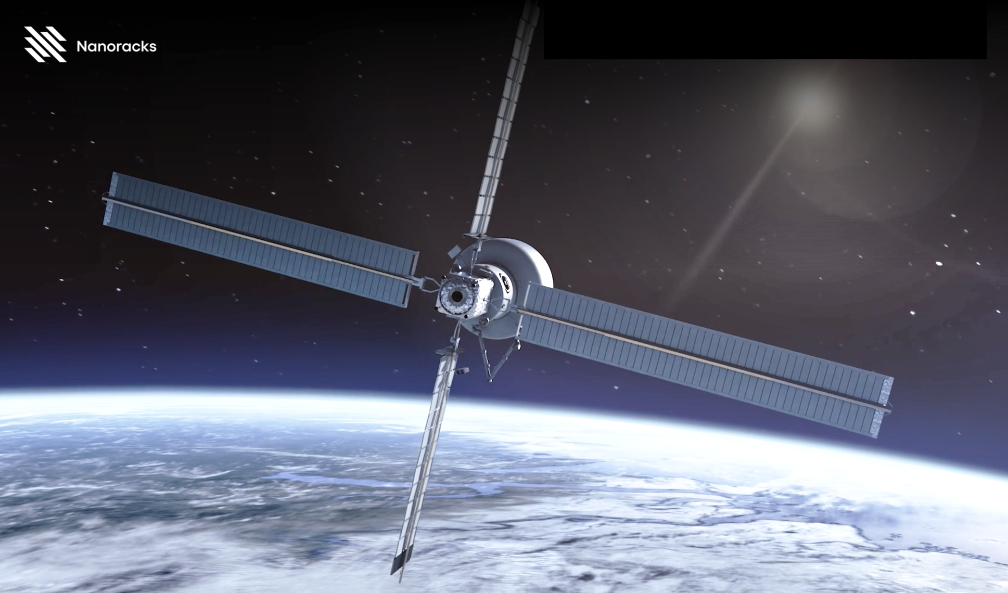
Nanoracks is currently engaged with Canada’s smallsat efforts. The company provides satellite deployment services from the ISS for the Canadian Space Agency’s Canadian CubeSat Project (CCP).

In addition to signing a contract with Nanoracks, Maritime Launch signed a Letter of Intent (LoI) to launch with Nova Scotia-based GALAXIA Mission Systems, an aerospace company that will deploy smallsats aboard Spaceport Nova Scotia’s first flight. GALAXIA’s founder, Arad Gharagozli, is the former founder and president of Dalhousie University’s Space Systems Lab, which is funded by the Canadian Space Agency.
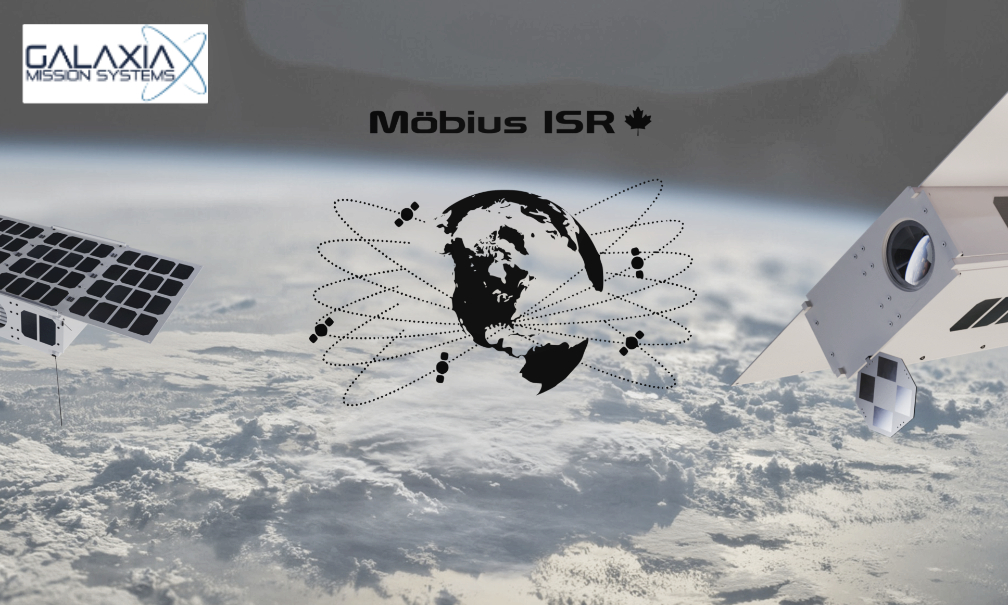
Maritime Launch unveiled preliminary designs for its Launch Control Centre (LCC), which is a facility on site that will manage all launch activities, including the deployment and initial control of satellites launched from Spaceport Nova Scotia. Designed by Architecture49, the LCC includes a visitor and educational center to showcase Nova Scotia’s diverse culture and environment and will provide a space accessible to students to discover the science of space and explore career opportunities in the sector.
The LCC will welcome students, tourists, and community members to learn about space, opportunities in STEM related education, and the exciting advancements within the aerospace sector. Interpretive planners and exhibit designers, AldrichPears Associates, will be developing the visitor center experience in collaboration with the local communities and the architectural team.
Construction and operation of Spaceport Nova Scotia will be sourced directly from a regional supply chain. As Canada’s first Spaceport advances toward full construction, Maritime Launch will be a significant contributor to economic recovery, as the province and region emerge from the COVID-19 pandemic.
“The team at Nanoracks is excited to partner with Maritime Launch to accelerate the growing space ecosystem in Canada,” said Jeffrey Manber, President of International and Space Stations, Voyager Space, and Co-Founder of Nanoracks. “Spaceport Nova Scotia represents a globally competitive location for launch, while the Cyclone-4M is a descendant of perhaps the most reliable launch vehicle ever built. Our work with CSA has shown us the breadth of expertise and interest across the country. This mission with Maritime Launch will provide an opportunity for Canadian companies and universities to access orbit onboard a domestic launch vehicle, developing key technologies while showing the value of international partnerships.”
“This announcement is an important step for Canada’s future in the growing commercial space sector in Canada. We are incredibly proud to be collaborating with Nanoracks, an innovative company with over a decade of experience in the commercial space sector,” said Steve Matier, President and CEO of Maritime Launch. “For Canada’s first launch to space, we could not have selected a better partner. Nanoracks is a champion for the Canadian space sector and has an ongoing relationship with the Canadian Space Agency to deploy Canadian satellites. We are thrilled that the Government of Canada, Province of Nova Scotia, and the Municipality of the District of Guysborough are here with us to mark this occasion, and we are grateful for their continued commitment to support the commercial aerospace sector.”
At the event, Maritime Launch was pleased to welcome the Honorable Sean Fraser, Minister of Immigration, Refugees and Citizenship, and the Honorable François-Philippe Champagne, Minister of Innovation, Science and Industry, who brought remarks on behalf of the Government of Canada.

“Canada's space sector is giving entrepreneurs, creators, engineers, scientists, and researchers the opportunity to make incredible advancements in science and technology and be part of the growing global space economy,” said Minister Champagne. “I congratulate the collaboration and innovation that has gone into making this announcement a reality today. This commercial launch venture will inspire young people to look to careers in STEM, while offering economic opportunities in Nova Scotia, Canada, and in Ukraine. The results of these efforts will help put Canada at the forefront of space innovation while creating the good jobs of tomorrow.”
Lisa Campbell, President of the Canadian Space Agency, and Chairman Volodymyr Taftai, Head of Ukraine’s State Space Agency, shared remarks and leaders from Yuzhmash and Yuzhnoye State Design Office (SDO) were in attendance.
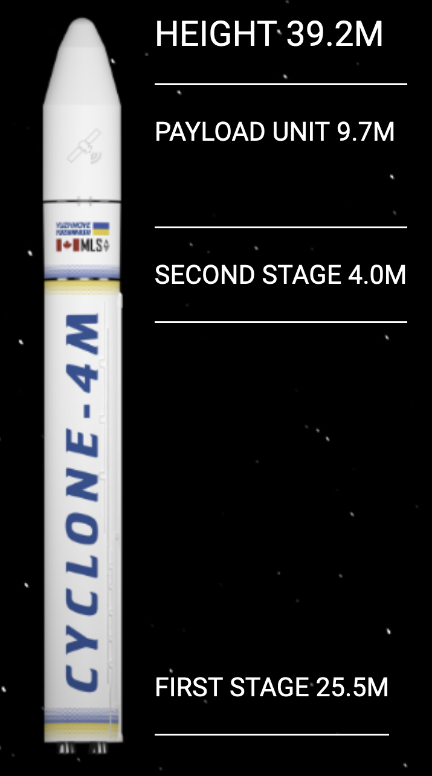
The Cyclone-4M launch vehicle (pictured to the right), which will be the first launch from Spaceport Nova Scotia, is developed by Yuzhnoye SDO and manufactured by Yuzhmash, both of Dnipro, Ukraine. These companies are proven leaders in the aerospace industry with more than 65 years of experience, with 877 successful launches to date.
SpaceQ has posted on Twitter a view of the Spaceport Nova Scotia launch site at this direct link...
Maritime Launch is a Canadian-owned commercial aerospace company based in Nova Scotia. Maritime Launch is developing Spaceport Nova Scotia, a launch site that will provide satellite delivery services to clients in support of the growing commercial space transportation industry over a wide range of inclinations. The development of this facility will allow the Cyclone-4M and other prospective launch vehicles to place their satellites into low-earth orbit, building to a launch tempo of eight launches per year. This will be the first commercial orbital launch complex in Canada. Maritime Launch’s suppliers, Yuzhnoye and Yuzhmash, are the developers of the Cyclone-4M payload delivery system and they are proven leaders in the aerospace industry with over 65 years of experience with 877 successful launches to date.
Astra’s Rocket 3.3’s Fourth Launch Attempt Is Successful From Kodiak Island, Alaska
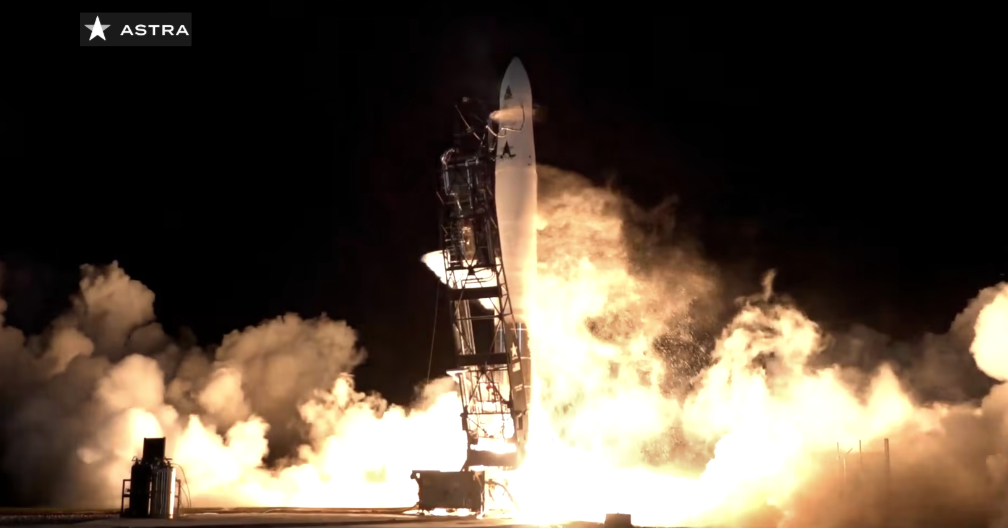
Astra Space, Inc. (“Astra”) (Nasdaq: ASTR) successfully completed their first, commercial, orbital launch for the United States Space Force (USSF) on November 19, 2021, PST. The launch, STP-27AD2, was conducted from Astra’s Kodiak Spaceport, located at the Pacific Spaceport Complex in Kodiak, Alaska.
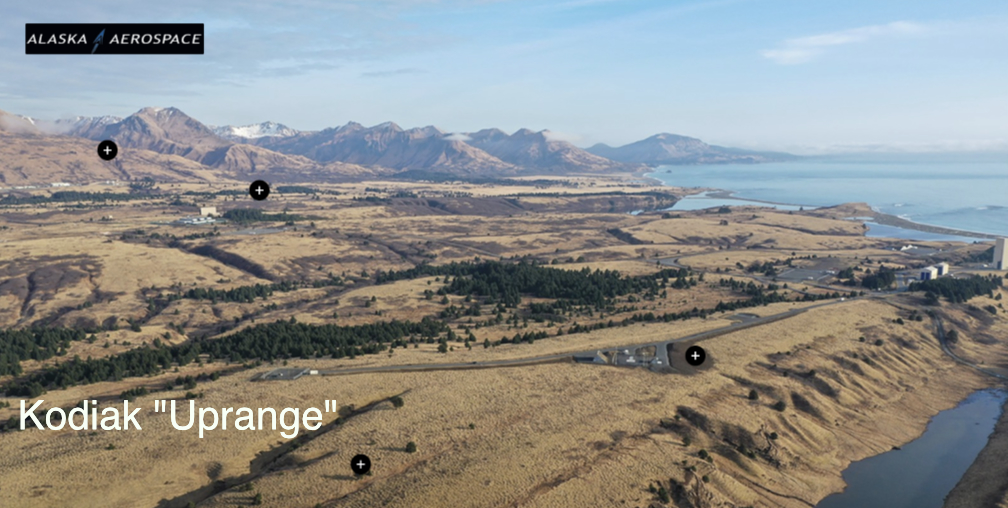
Astra’s launch system successfully demonstrated the orbital placement of a test payload to an inclination of 86.0 degrees at an altitude of 500 km. The payload achieved an orbital velocity of 7.61 kilometers per second in 8 minutes and 47 seconds.
The United States Space Force contracted this launch through a Defense Innovation Unit Other Transaction Agreement.
Astra was founded in 2016 to launch a new generation of space services enabled by large constellations of smallsats in LEO. The team set out to design a rocket that could be mass produced like an automobile, and a launch system that could deliver payloads into orbit from spaceports everywhere, inspired by the opportunity to provide daily access to space. In just five years, Astra successfully “learned its way” to orbit, launch by launch, increasing capabilities, decreasing costs and increasing operational efficiencies with each iteration.
“Reaching orbit is a historic milestone for Astra,” said Chris Kemp, Founder, Chairman and CEO of Astra. “We can now focus on delivering for our customers and scaling up rocket production and launch cadence.”
“We owe this success to our incredible team and the culture we’ve built at Astra,” said Adam London, Co-Founder and CTO of Astra. “I’m humbled by their courage and commitment to keep building, launching, learning, and iterating until we succeeded.”
Astra’s mission is to improve life on Earth from space by creating a healthier and more connected planet. Today, Astra offers the lowest cost-per-launch dedicated orbital launch service of any operational launch provider in the world. Astra delivered its first commercial payload into Earth orbit in 2021, making it the fastest company in history to reach this milestone, just five years after it was founded in 2016. Astra (NASDAQ: ASTR) was the first space launch company to be publicly traded on Nasdaq.
The DoD’s Pivot To LEO Smallsats Has Analysts Predicting A Commercial Satellite Industry Boon

The U.S. Military’s strategic “Pivot to LEO” plan to implement a global mesh network of optically connected satellites in LEO will be a significant growth driver for the commercial satellite industry, according to a newly released report by Quilty Analytics, a leading research and advisory firm for the Satellite & Space sector.
Featuring input from the Space Development Agency (SDA), space industry executives and commentary from Wall Street space sector analyst Chris Quilty, the 60-page report summarizes the SDA’s race to implement a proliferated LEO (PLEO) space architecture that will enable the U.S. to maintain its strategic and tactical advantages by delivering advanced capabilities for missile tracking, narrowband and broadband communications, GPS augmentation, and other military objectives.
The Quilty Analytics Satcom Quarterly highlights key sector developments and offers in-depth analysis on timely issues affecting the Satellite & Space industry. The Q3’21 edition covers topics including space sustainability, FCC spectrum filing rounds, the Viasat/Inmarsat acquisition, and management shifts at Eutelsat and Intelsat. The report also provides the latest information on commercial GEO satellite launches, satellite operator revenue KPIs, and constellation updates for Amazon, OneWeb, SES, SpaceX and Telesat.

“Overall, we see DoD’s pivot to LEO as a positive not just for the U.S. military, but also for LEO operators, satellite manufacturers, terminal makers, and the commercial satellite industry as a whole,” Quilty stated. “We expect the NDSA to bolster established and New Space companies working to develop new technologies. The NDSA innovations will benefit national defense along with commercial SATCOM operators and the markets they serve.”
Strategic Agreement Signed By Voyager Space + Space Micro
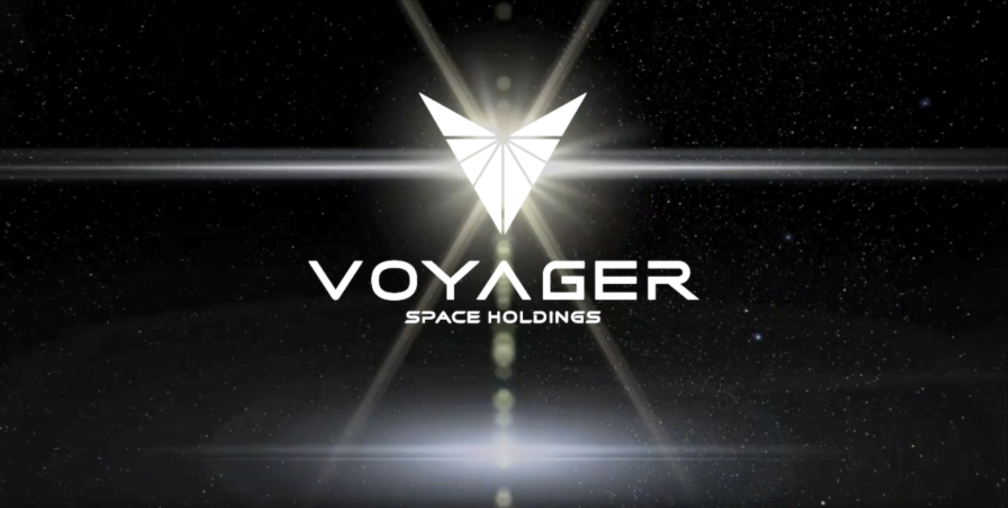
Voyager Space Inc. (Voyager) is intending to acquire a majority stake in Space Micro, an innovative engineering-driven business focused on advancing high-performance satellite communications (SATCOM), digital and electro-optical systems with more than 2.7 million hours of space flight heritage.
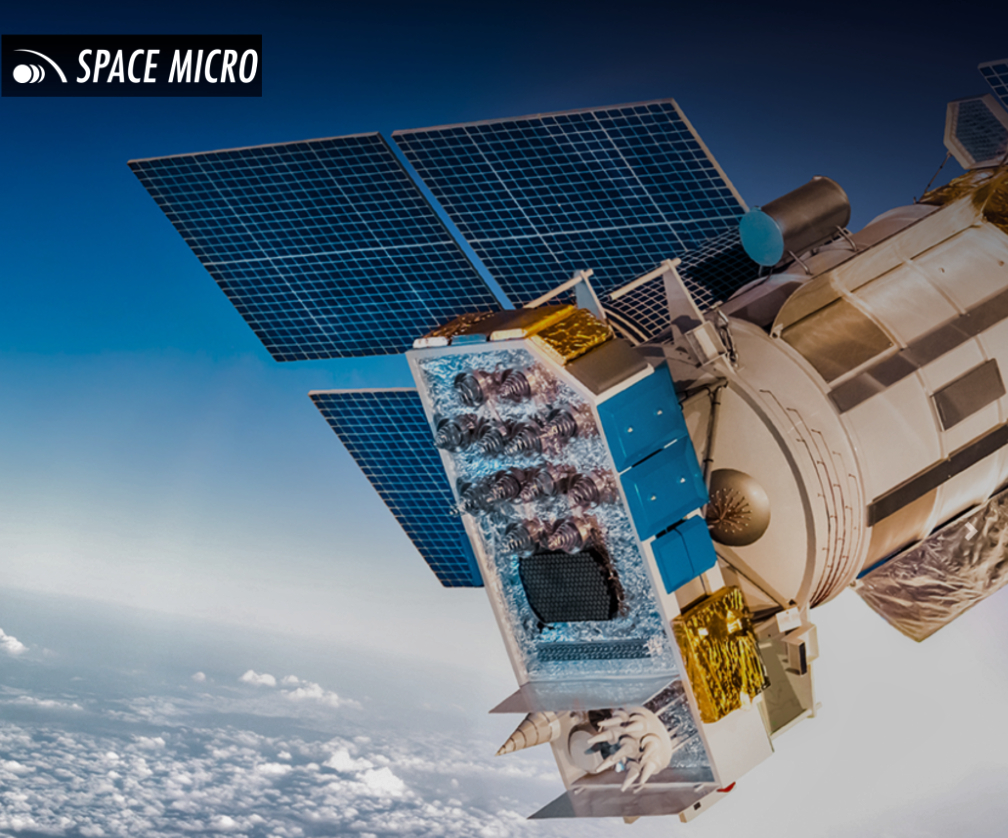
Space Micro developed the world’s highest data rate Laser Communications Terminal in orbit. As part of the agreement, Voyager intends to provide strategic operations support to help advance Space Micro’s technology throughput to civil, commercial and defense customers.
Founded in 2002, Space Micro delivers best-in-class satellite technology to the growing commercial market. Space Micro delivered its first computer and image-processing subsystem in space within the first four years as an organization, then went on to develop its first advanced Software Defined Radios for NASA’s Interface Region Imaging Spectrograph (IRIS), Lunar Atmosphere Dust and Environment Explorer (LADEE) and The Transiting Exoplanet Survey Satellite (TESS).
The company now has multiple active contracts with NASA, including the development of real-time data sorting inference processing units (IPUs) for Earth Observation (EO) missions and for providing X-band transponders for two lunar missions selected under the Artemis program. Space Micro also has a long history in providing critical technology for the U.S. Department of Defense, including Intelligence, Surveillance and Reconnaissance (ISR) space payloads, laser secure communications terminals, and digital RF-to-optical and optical-to-RF signal converters.
Space Micro’s customers include NASA, the U.S. Space Force (USSF), U.S. Air Force (USAF), Space Systems Command (SSC), U.S. Special Operations Command (SOCOM), Space IL (recipient of the Google X-Prize Moonshot Award), the German Space Agency, and many more. Most recently, Space Micro was awarded a contract to deliver ten NanocomTM Software Defined Radios (SDRs) via Lockheed Martin in support of the Space Development Agency’s Tranche 0 satellite constellation.
This announcement rounds out nearly two years of immense growth for Voyager Space, following most recently the acquisition of Valley Tech Systems.
“For almost two decades Space Micro has developed game-changing technologies and provided trusted high-performance satellite communications systems,” said Space Micro Co-Founder and Chairman, David Strobel. “Today marks a huge step in our growth trajectory. The satellite constellation market stands at the tipping point of explosive expansion and now, with the Voyager team and operational functions by our side, we will be prepared to scale our technologies to meet these market needs.”
“Expanding our already rapidly-growing laser and optical communications systems is a top priority going forward,” said Space Micro Co-Founder and CEO, David Czajkowski. “We have an unbeatable record of zero in-orbit failures since our first launch, and that’s a record we seek to maintain as we continue to grow these critical, high-demand satellite technologies.”
“Space Micro is a perfect addition to Voyager’s growing NewSpace portfolio of entrepreneurs and technology capabilities,” said Matthew Kuta, President and COO of Voyager Space. “What Space Micro has accomplished on their own is outstanding - and they have a diverse customer base to prove it. Now in partnership with Voyager, Space Micro will have the opportunity to expand its technology footprint and remain at the forefront of innovation for advanced satellite and communications systems.”
Aegis Aerospace Awards STPSat-7 Smallsat Mission Power Systems To AAC Clyde Space
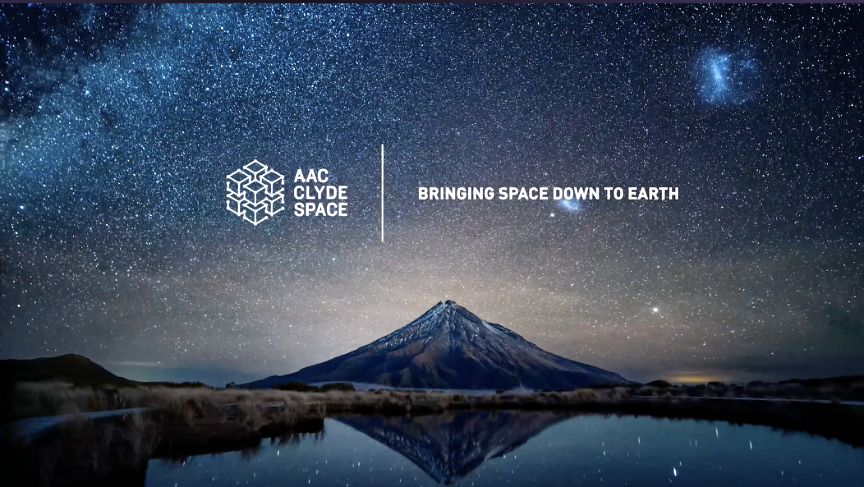
AAC Clyde Space AB has won an order from U.S.-based Aegis Aerospace to supply the Starbuck power systems and battery solutions, worth $500,000, for a satellite mission carried out on behalf of the U.S. Department of Defense (DoD).
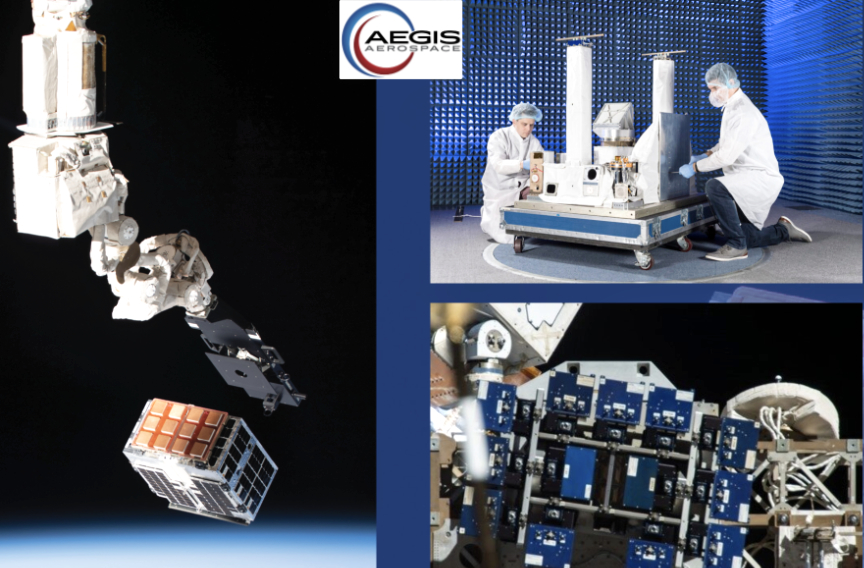
The mission, the STPSat-7, is a 150 kg. smallsat that will host research and technology demonstration payloads for the Department of Defense Space Test Program and will operate in LEO. The order is expected to be delivered in Q4, 2022.
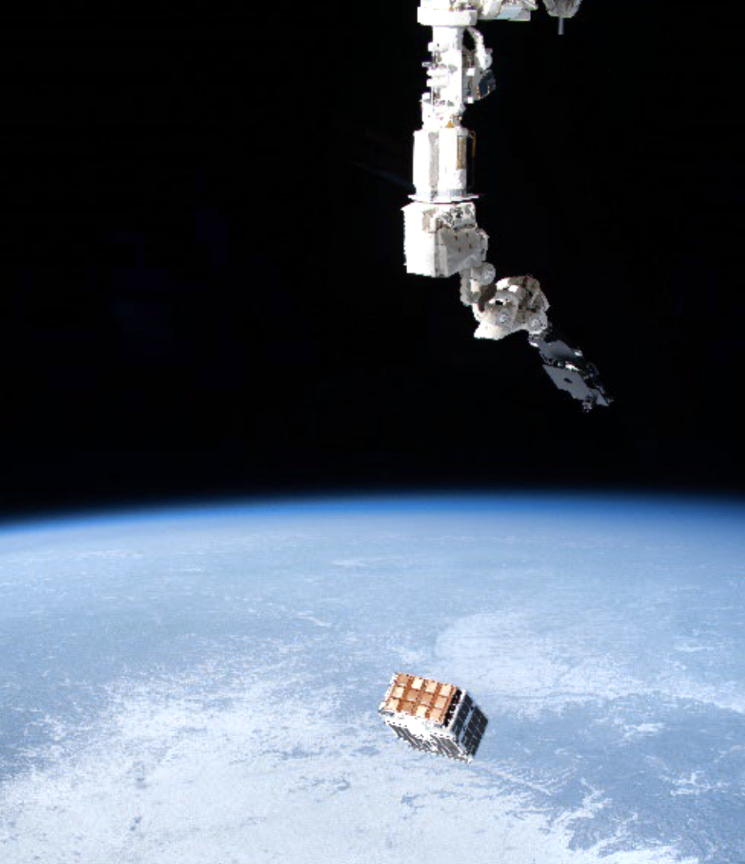
This mission is part of the Space Test Program (STP), the primary provider of spaceflight for the DoD space science and technology community. The program has been in existence for more than 50 years, with a multitude of launches, and serves as a vehicle for testing novel technologies.
"We are proud to have won this prestigious order. The proven reliability, modular design, and flexibility were key in Aegis Aerospace's decision to choose our Starbuck power systems for the mission," said AAC Clyde Space CEO Luis Gomes.
NanoAvionics Preparing To Launch Their 5th Rideshare Mission Via Exolaunch Aboard The SpaceX Transporter-4 Mission
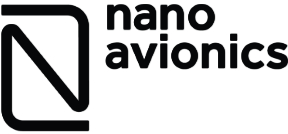
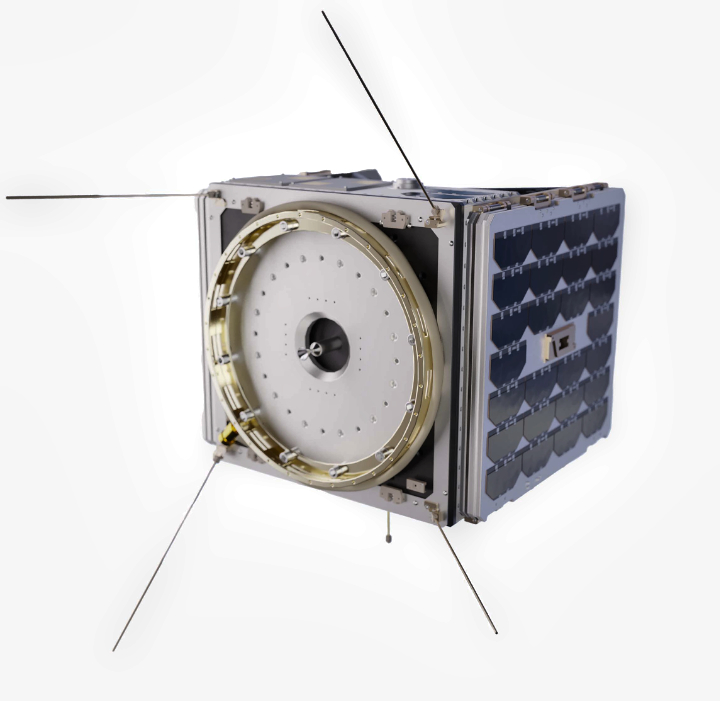
NanoAvionics has announced their latest satellite rideshare mission “MP42” is to be launched aboard a SpaceX Falcon 9 with payloads from OQ Technology and Veoware.
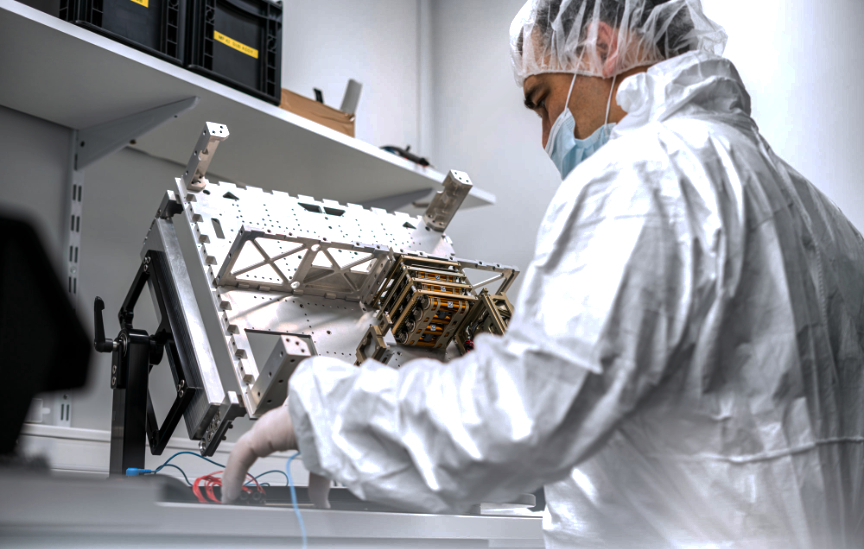
Using the prototype of its new MP42 smallsat bus, this is the fifth shared satellite mission by NanoAvionics, which has been one of the firsts companies in the smallsat industry to successfully kickstart and continue such a commercial program. The launch of NanoAvionics’ satellite has been booked for the SpaceX Transporter-4 mission, planned for 2022.
The MP42 is also the company’s largest built satellite and the first commercially available modular microsat bus in the industry. It has the same modularity for hard- and software and mission operations infrastructure as NanoAvionics’ nanosatellites. It will be deployed into LEO via a launch agreement with NanoAvionics’ launch partner Exolaunch, a German company providing launch, deployment and in-space transportation services. Exolaunch will also supply its CarboNIX separation ring to dock the MP42 to the SpaceX port aboard the Falcon 9 rocket.
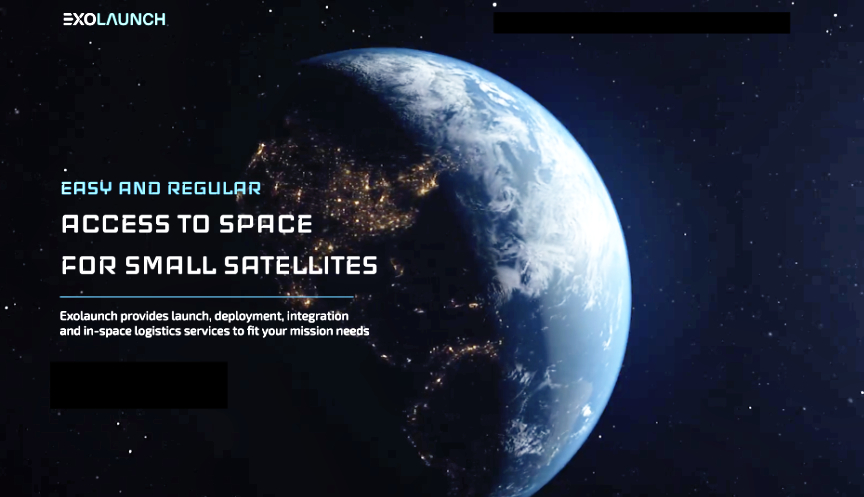
The MP42 bus is part of NanoAvionics new range of microsats. It was developed by the company to meet the growing customer demand for hosting more sophisticated payloads like larger cameras for Earth Observation (EO) or power-hungry devices for high data throughput and complex communications missions. The MP42 is capable of accommodating payloads in the range of 50 kg. and all its subsystems were tested with 20kRad biased radiation dose and board level Single Event Effects (SEE) tested under 200 MeV Proton Beam, ensuring at least five years of lifetime in LEO.
Among other customer payloads aboard the MP42, NanoAvionics will integrate a second ‘cell tower in space,’ dubbed “Tiger-3,” for OQ Technology’s 5G IoT/M2M communication constellation. The smallsat will also host Veoware’s RW500 fully integrated reaction wheel for high performance satellite attitude control with next-generation high torque / low power technology. As a default in its new microsat range, NanoAvionics introduced its upgraded payload controller to maximize data-exchange and support payload operations. The new range of microsat products will also include AI reinforced on-board payload data processing, maximized data exchange rates, and the possibility to implement customer software blocks similarly as in mobile phone application cases.
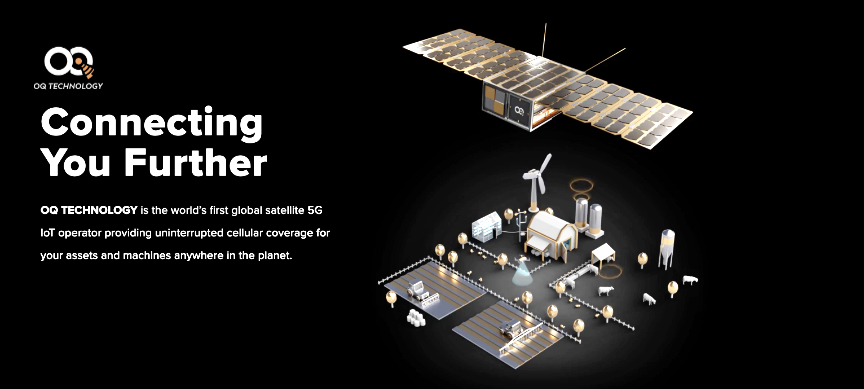
OQ Technology’s third mission follows the successful launch of its Tiger-2 satellite in June this year, which performed very well during tests. Using the satellite, the company also tested its user terminal in harsh conditions and managed to achieve even indoor reach with no external antennas.
OQ’s ‘cell-tower in space’ technology aims to provide real-time global connectivity with ultra-reliable low latency communication (URLLC) and massive machine type communications (mMTC), compatible with the global 3GPP standard, for applications in rural and remote areas, particularly in industries such as oil, gas, logistics, mining and defence. The company has recently revealed its patents portfolio for 5G IoT cellular communication over satellites and aims to provide global coverage from north pole to south pole.
Veoware will run various on-orbit tests with its RW500 high-torque reaction wheel. The reaction wheel is designed to offer high torque for low volume and low power consumption, with the greatest agility for satellites around 50 kg, and for missions with a minimum of five years lifetime. Other technological features include low magnetic residual, very high radiation shielding, redundant windings, firmware upgrades in space and regenerative braking.
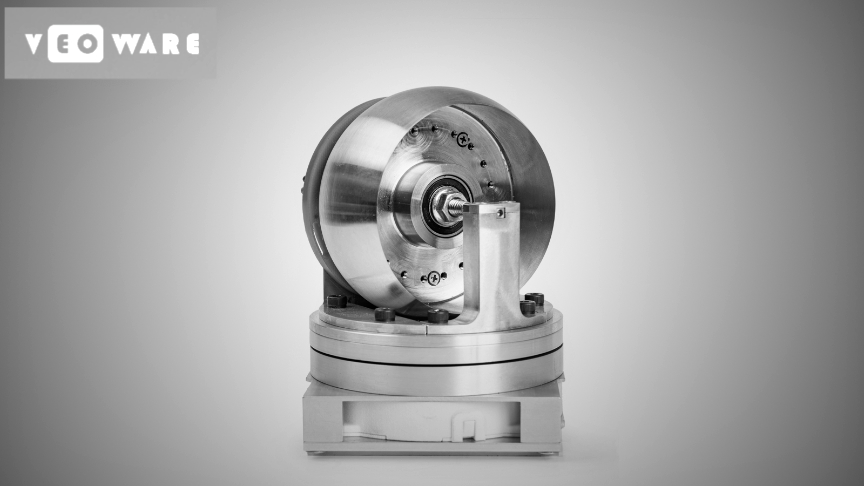
Vytenis J. Buzas, co-founder and CEO of NanoAvionics, said, “With the MP42 platform as the latest addition to our product range of small satellites, we are enabling organizations to enter and benefit from the space market in the microsat segment. Previously, their use was constrained due to higher cost, lack of modularity, mechanical restraints and suitable mission operations. Our rideshare missions and shared satellite services have proven to be very beneficial to many NewSpace companies. They allowed them to quickly and cost efficiently demonstrate their technologies in orbit, and add further satellites to their constellations.”
Omar Qaise, founder and CEO of OQ Technology, said, “After our successful Tiger-1 and Tiger-2 missions, we are now accelerating the deployment of our satellite network to have global ‘cell tower in space’ coverage for 5G IoT applications. Tiger-3 will provide better access and more capacity to interested customers, and will soon be followed by more missions.”
Rocket Lab Launches Have The Support Of New Zealand’s Air Traffic Controllers

As Rocket Lab’s Electron rockets take off into space, New Zealand’s air traffic controllers are ensuring a safe passage through controlled airspace.
Airways New Zealand, the country’s air navigation service provider, has supported Rocket Lab’s Electron rocket launches since 2017, when the aerospace organization launched its first rocket into space. Since then, 21 Electron rockets have been launched, deploying more than 100 satellites into orbit.
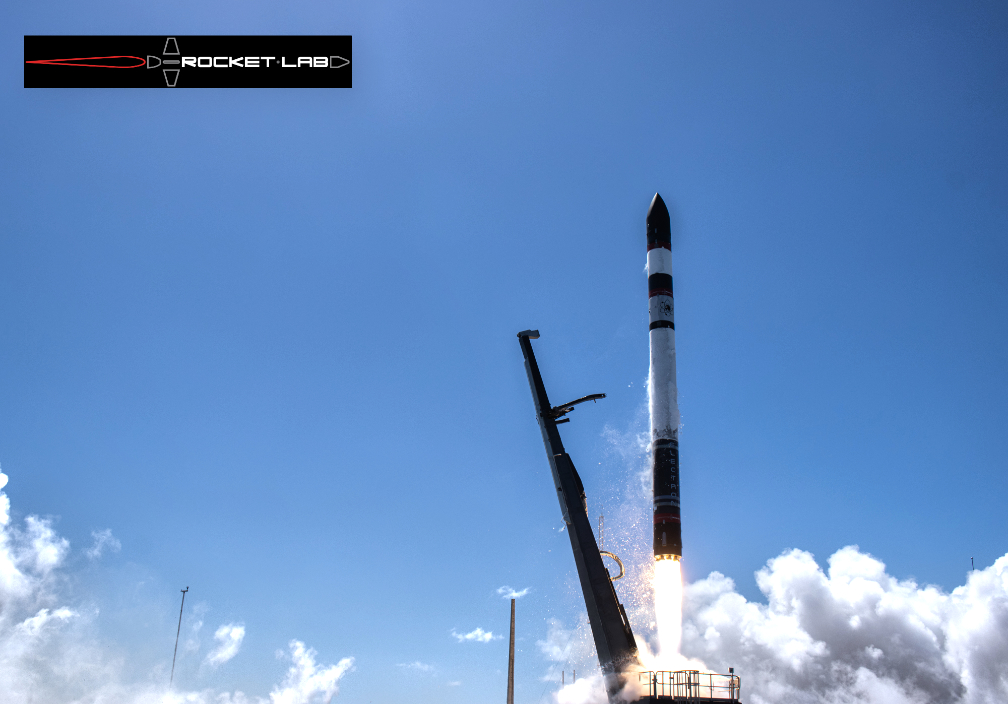
Now, Airways has signed a second, five-year contract with Rocket Lab to provide air traffic services, including management of a ‘special use airspace’ around each Electron rocket as it launches. Airways is in a strong position to be working with Rocket Lab as it continues to launch its Electron rocket into space from New Zealand.
Organizations such as NASA and Google have selected New Zealand for their balloon launches, due to its relatively uncongested airspace, Airways’ experience and robust systems and procedures and a national appetite to support emerging technologies.
“Airways continues to provide support in the preparation and execution of each Rocket Lab launch. We work closely with the launch team to ensure that every rocket has a safe flight path through New Zealand’s airspace,” said Airways’ General Manager of Air Navigation Services, Katie Wilkinson. “Allowing safe and flexible access to the airspace is critical to supporting this growing industry in New Zealand, and we have a team of experienced air traffic controllers, flight service officers and air traffic services experts working behind the scenes to enable this.”
“We’re pleased to be working closely with Airways to ensure that our launch operations are safe and well coordinated with all aviation activity. Airways has played an important role in ensuring the safety of New Zealand’s growing aerospace industry,” said Izaak Connaughton, Launch Safety and Regulatory Affairs Manager for Rocket Lab.


